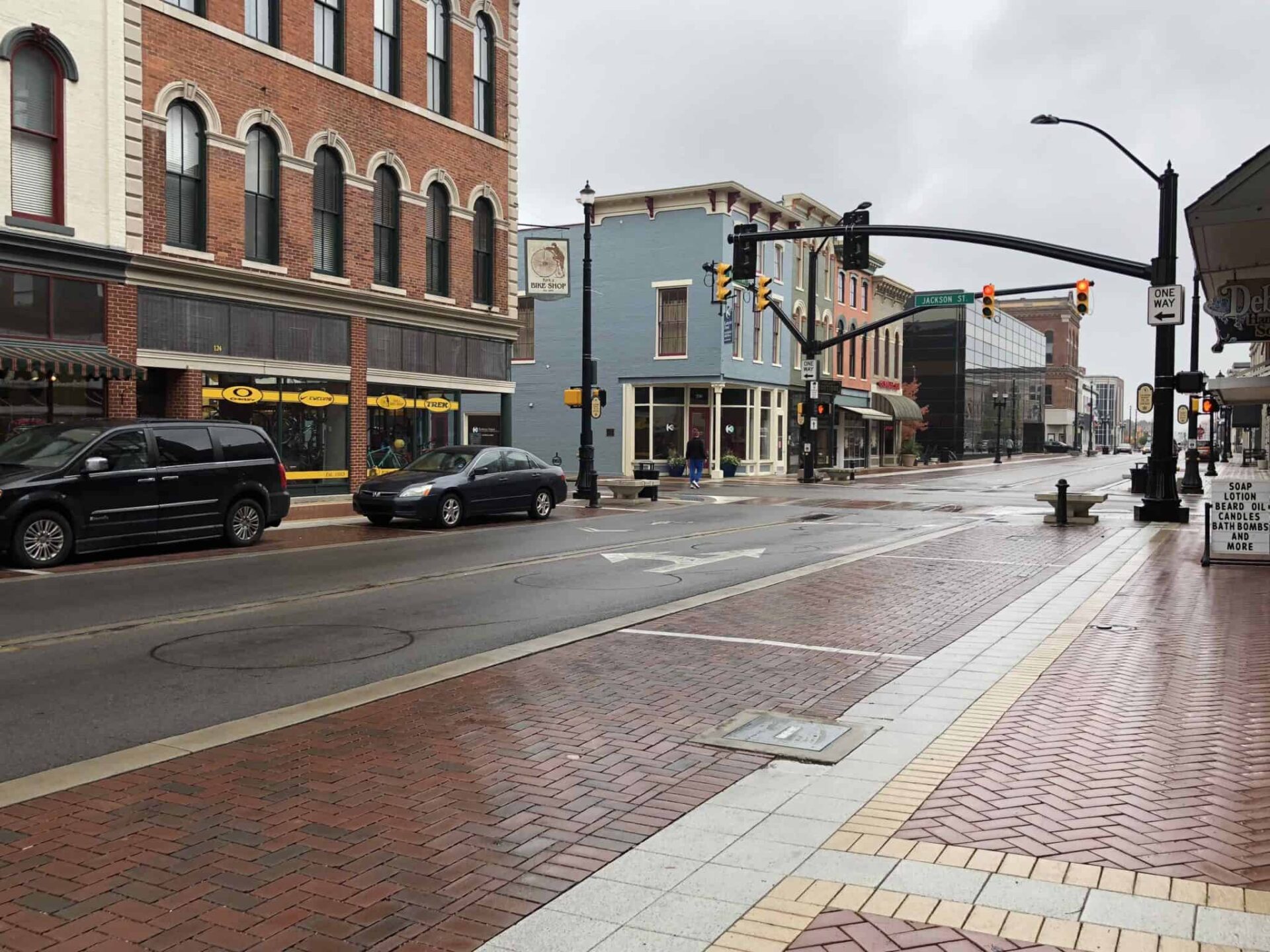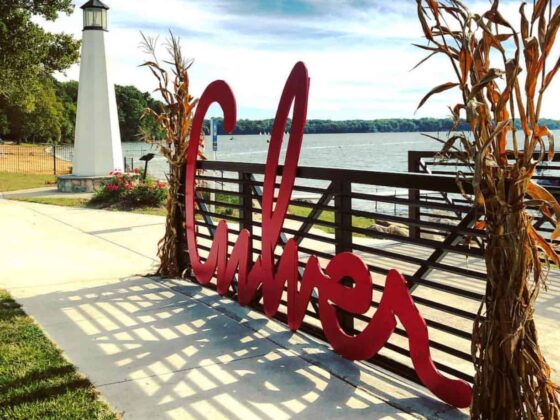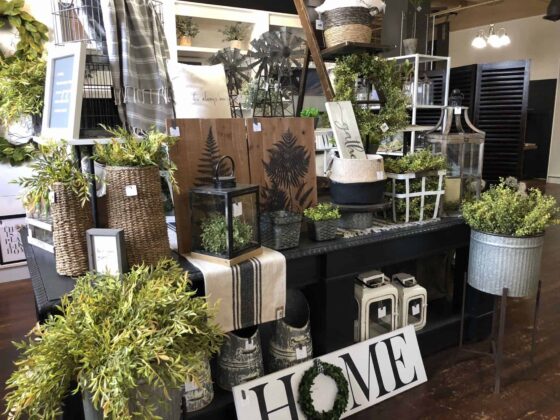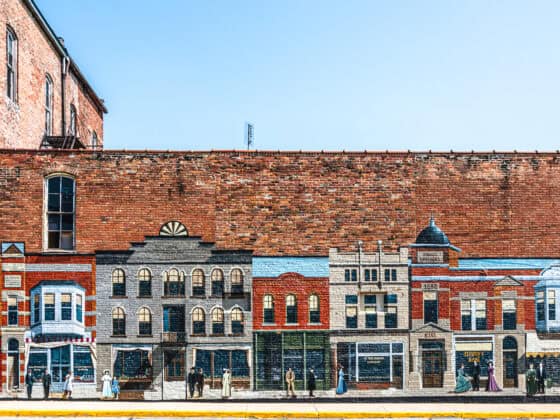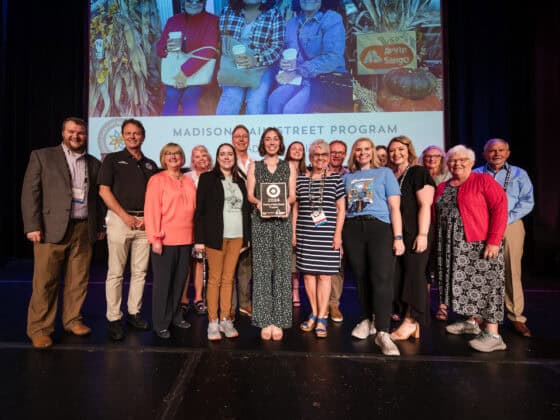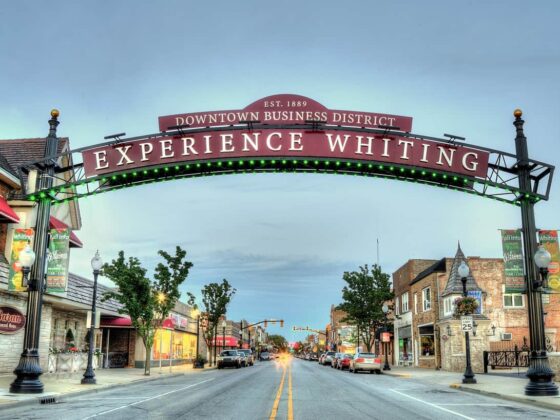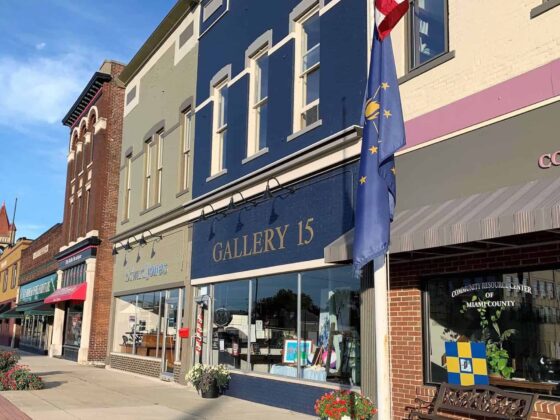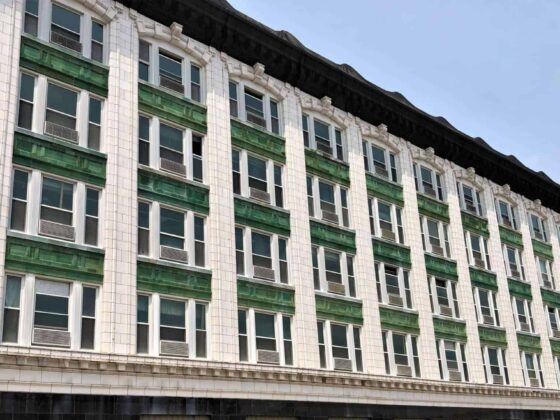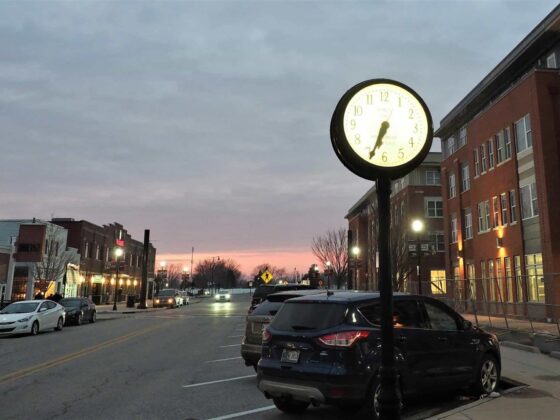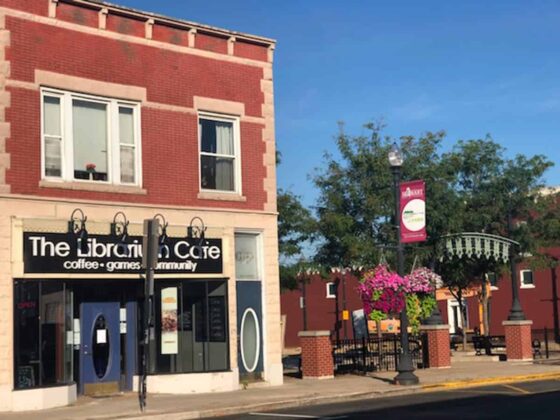Story by ELIZABETH GRANGER
The mannequins in the windows moved. They were Callie Jones and Amy Ziuchkovski, aka Annie and Miss Hannigan, who were in the storefront windows on Aug. 2 to invite shoppers to their upcoming production of “Annie” at the Muncie Civic Theatre.
The scene highlighted multiple aspects of Muncie’s downtown revitalization. A restored theater. A renovated shop. A renewed spirit of camaraderie energizing the community. And a growing desire for increased inclusivity in this north-central Indiana city of 70,000. All coming together during that First Thursday event.
The actors were in the window of the Hayloft Boutique. Owner Debbe Caine opened the clothing shop in 2015 when she returned to central Indiana from years in Florida.
She was intrigued by the revamped Muncie and spirit of entrepreneurship. “People say it’s like the old days with people walking about downtown,” she says.
“Everything’s in cycles. And now we’re back to small businesses with unique items and personal service. We have the coffee, the couch, the champagne. We don’t treat people like customers; we treat them like friends. For the first time in my life, I’m passionate about my job.”
Muncie Downtown hosts monthly First Thursday events with gallery openings, shopping, and dining. The Hayloft sponsors “Pose for a Purpose” with live mannequins in the windows; they’re typically shoppers who are trying on new clothes. The store donates 15 percent of what it makes during the event to
a charity.
And there it is, that attitude of fun, of service, of inclusion. It’s obvious here, from curb-less downtown streets to moveable seating in the theater to the new Courtyard by Marriott at the edge of downtown with more than the normal number of accessible rooms. It’s an Arc Teaching Hotel—the only one in the country—to train persons with disabilities to work in the hospitality and medical industries.
“One of the issues important to people with disabilities is employment,” says Kim Dodson, executive director of The Arc of Indiana, which advocates for those with intellectual and developmental disabilities.
 “They want to be able to have access to jobs.” Arc found the perfect setting in Muncie. “One of the things that made us choose Muncie was the collaborative business community, (and) the public transportation system. We had a lot of choices of where we could have done this, but nobody did it like Muncie.
“They want to be able to have access to jobs.” Arc found the perfect setting in Muncie. “One of the things that made us choose Muncie was the collaborative business community, (and) the public transportation system. We had a lot of choices of where we could have done this, but nobody did it like Muncie.
”She continues, “People appreciate staying in a hotel with such a strong mission. ”A modern hotel with class and comfort, often catching guests by surprise because its mission is so seamlessly stitched into the fabric of the lodging that it isn’t initially noticeable. It’s connected to the Horizon Convention Center and the Muncie Children’s Museum.



